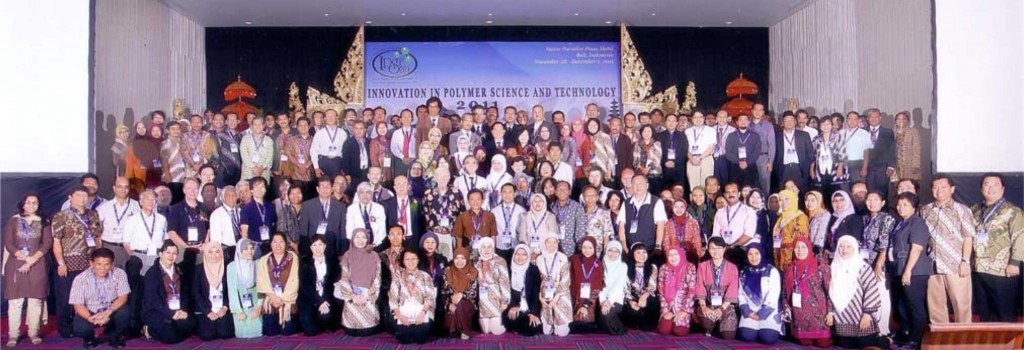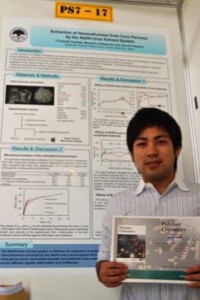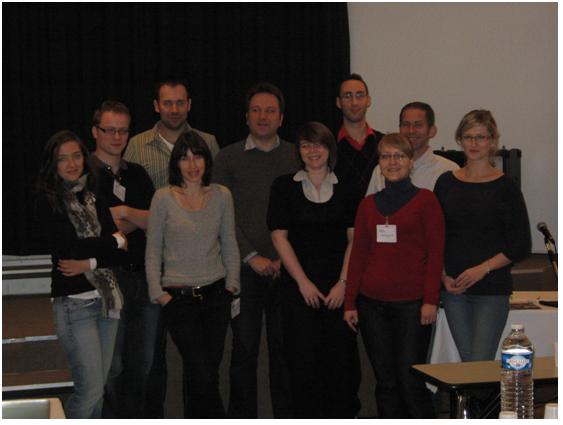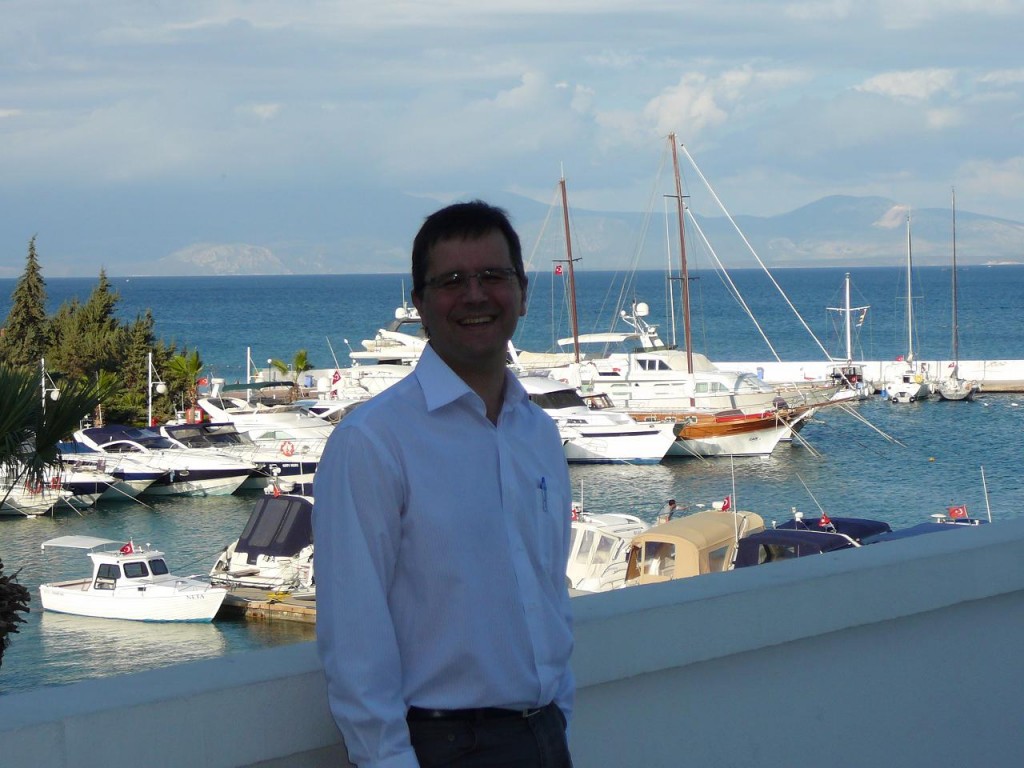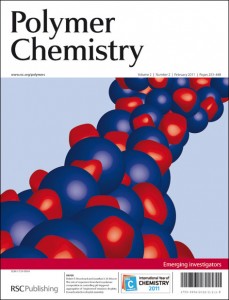 Nicolay V. (Nick) Tsarevsky obtained his M.S. in theoretical chemistry and chemical physics from the University of Sofia, Bulgaria (1999) and Ph.D. in chemistry from Carnegie Mellon University in Pittsburgh, PA (2005), where he worked in Prof. Kris Matyjaszewski’s labs. His work was related to the synthesis of functional polymers by atom transfer radical polymerization and the development of rules for rational selection of the catalyst for various reaction media, including aqueous solvents. He has authored and coauthored more than 65 peer-reviewed journal papers or book chapters, a textbook for high school students, and several patents. He was awarded several national awards, including the Kenneth G. Hancock Memorial Award in Green Chemistry (2003) and the National Starch & Chemical Award (2008). Nick was Visiting Assistant Professor at the Department of Chemistry at Carnegie Mellon University (2005-6), Associate Director of the CRP Consortium (2006), and a member of the founding team of ATRP Solutions, Inc., of which he served as Chief Science Officer (2007-10). He was secretary (2005) and chair (2006) of the Polymer Group of the Pittsburgh Section of ACS, as well as chair of the Section (2009). He joined the Department of Chemistry at Southern Methodist University in the summer of 2010. Current research interests include polymerization techniques, functional materials, coordination chemistry and catalysis, and the chemistry of hypervalent compounds.
Nicolay V. (Nick) Tsarevsky obtained his M.S. in theoretical chemistry and chemical physics from the University of Sofia, Bulgaria (1999) and Ph.D. in chemistry from Carnegie Mellon University in Pittsburgh, PA (2005), where he worked in Prof. Kris Matyjaszewski’s labs. His work was related to the synthesis of functional polymers by atom transfer radical polymerization and the development of rules for rational selection of the catalyst for various reaction media, including aqueous solvents. He has authored and coauthored more than 65 peer-reviewed journal papers or book chapters, a textbook for high school students, and several patents. He was awarded several national awards, including the Kenneth G. Hancock Memorial Award in Green Chemistry (2003) and the National Starch & Chemical Award (2008). Nick was Visiting Assistant Professor at the Department of Chemistry at Carnegie Mellon University (2005-6), Associate Director of the CRP Consortium (2006), and a member of the founding team of ATRP Solutions, Inc., of which he served as Chief Science Officer (2007-10). He was secretary (2005) and chair (2006) of the Polymer Group of the Pittsburgh Section of ACS, as well as chair of the Section (2009). He joined the Department of Chemistry at Southern Methodist University in the summer of 2010. Current research interests include polymerization techniques, functional materials, coordination chemistry and catalysis, and the chemistry of hypervalent compounds.
Please follow the link for further information on Nick’s research group and his recent paper in Polymer Chemistry.
What was your inspiration in becoming a chemist?
The secrets of nature fascinated me since my early childhood. When I was about 10 or so, I started spending my summer vacation at our house in the outskirts of Vitosha mountain near Sofia. In that area, pretty rustic at the time, I started collecting various minerals, insects, and medicinal plants. I thought I would become a biologist and I was reading a lot of books and textbooks on biology. When I was in 5th grade, my parents and I visited friends who were teachers. I asked if they could find for me the 8th grade biology textbook, which was the only one missing in my collection, but for some reason I was given the textbooks on both biology and chemistry. I started browsing and reading them and by the time we had to leave for home several days later, I had fallen in love with the newly-discovered science of chemistry to such an extent that I took with me the chemistry textbook but left behind the biology book. I quickly decided to have my own home lab, and very soon, with the help of my parents’ colleagues and friends, I had a pretty decent collection of glassware and chemicals. That is when my love for chemistry started and nothing has been able to extinguish it since then. My high school teacher at the National School of Mathematics and Science, Mrs. Tanya Apostolova, helped me start some research at the University of Sofia when I was in 9th grade. I entered the University of Sofia to study chemical physics and theoretical chemistry, but during my last year there, one of my professors, Dr. George S. Georgiev, introduced me to polymer science and the exciting world of macromolecular materials. He recruited me to his lab to do research, which was the basis of my M.Sc. thesis. My studies continued in Kris Matyjaszewski’s lab at Carnegie Mellon University, where I learned a great deal and became more convinced than ever that precise measurements, determination of exact numbers, and understanding of reaction mechanisms and kinetics are crucially important to rationally select the optimal reaction conditions needed to make materials. In other words, I have been faithful to chemistry since 5th grade and never did or never will abandon it.
What was the motivation behind the research in your recent Polymer Chemistry paper? (DOI: 10.1039/c1py00495f)
Controlling molecular characteristics, such as molecular weight, architecture or placement of functional groups is one of the most important goals in synthetic polymer chemistry. However, sometimes the synthesis of specific macromolecules can be rather complicated and time consuming. We were trying to find an easy, and preferably relatively inexpensive, strategy to synthesize branched macromolecules without the need to employ pre-made inimers, which are often synthesized via multi-step procedures. We decided to explore the possibility to exchange “ligands” attached to hypervalent iodine centres with the polymerizable methacryloyloxy groups, yielding inimers in situ. The exchange turned out to be efficient and the homolytic cleavage of the newly formed iodine-oxygen bonds gave rise to branched or transiently crosslinked macromolecules. We were inspired by earlier work on ligand exchange reactions at hypervalent iodine atoms and also by work demonstrating that hypervalent iodine compounds can participate in a number of radical reactions, including initiation of radical polymerization.
Why did you choose Polymer Chemistry to publish your work?
Polymer Chemistry is a very exciting new journal, in which high quality and high impact work is published on mechanistic studies of polymerization or polymer modification, synthesis of materials, characterization, applications, etc. All major aspects of polymer chemistry are thus covered in the journal and it is only natural that polymer chemists would want their work to be published there.
In which upcoming conferences may our readers meet you?
I will be attending the Spring ACS National Meeting in San Diego at the end of March 2012, where I will be giving a talk at a symposium honouring Kris Matyjaszewski. I also look forward to attending the Warwick Polymer Conference in July.
How do you spend your spare time?
In addition to chemistry, I love history and art, and I spend a lot of my time reading history books, mostly original sources, visiting museums, listening to opera recordings or going to the theatre or the opera house. I have been known to travel quite a distance to attend a performance of interest. I am happy I was given the chance to develop a course on “Chemistry and Technology in Art”, which I will offer in the spring semester of 2012. It will give me the opportunity to teach about all my three favourite subjects – chemistry, history, and art. This is still work in progress and I currently dedicate a significant fraction of my spare time to it.
Which profession would you choose if you were not a scientist?
I am passionate about the theatre and if I were not a chemist or a scientist, I would have enjoyed being a playwright or possibly an actor, provided I had the necessary talent. In fact, several years ago, I wrote two scripts for educational programs for children, which got to be on national TV in Bulgaria. That was an extremely rewarding and pleasant experience. The scripts were not exactly “plays” (although they were somewhat close) but the fact that I enjoyed writing them so much made me realize that I would actually be very happy if I could be a playwright.
Comments Off on Polymer Chemistry Author of the Week – Nicolay V. Tsarevsky












 Nicolay V. (Nick) Tsarevsky obtained his M.S. in theoretical chemistry and chemical physics from the University of Sofia, Bulgaria (1999) and Ph.D. in chemistry from Carnegie Mellon University in Pittsburgh, PA (2005), where he worked in Prof. Kris Matyjaszewski’s labs. His work was related to the synthesis of functional polymers by atom transfer radical polymerization and the development of rules for rational selection of the catalyst for various reaction media, including aqueous solvents. He has authored and coauthored more than 65 peer-reviewed journal papers or book chapters, a textbook for high school students, and several patents. He was awarded several national awards, including the Kenneth G. Hancock Memorial Award in Green Chemistry (2003) and the National Starch & Chemical Award (2008). Nick was Visiting Assistant Professor at the Department of Chemistry at Carnegie Mellon University (2005-6), Associate Director of the CRP Consortium (2006), and a member of the founding team of ATRP Solutions, Inc., of which he served as Chief Science Officer (2007-10). He was secretary (2005) and chair (2006) of the Polymer Group of the Pittsburgh Section of ACS, as well as chair of the Section (2009). He joined the Department of Chemistry at Southern Methodist University in the summer of 2010. Current research interests include polymerization techniques, functional materials, coordination chemistry and catalysis, and the chemistry of hypervalent compounds.
Nicolay V. (Nick) Tsarevsky obtained his M.S. in theoretical chemistry and chemical physics from the University of Sofia, Bulgaria (1999) and Ph.D. in chemistry from Carnegie Mellon University in Pittsburgh, PA (2005), where he worked in Prof. Kris Matyjaszewski’s labs. His work was related to the synthesis of functional polymers by atom transfer radical polymerization and the development of rules for rational selection of the catalyst for various reaction media, including aqueous solvents. He has authored and coauthored more than 65 peer-reviewed journal papers or book chapters, a textbook for high school students, and several patents. He was awarded several national awards, including the Kenneth G. Hancock Memorial Award in Green Chemistry (2003) and the National Starch & Chemical Award (2008). Nick was Visiting Assistant Professor at the Department of Chemistry at Carnegie Mellon University (2005-6), Associate Director of the CRP Consortium (2006), and a member of the founding team of ATRP Solutions, Inc., of which he served as Chief Science Officer (2007-10). He was secretary (2005) and chair (2006) of the Polymer Group of the Pittsburgh Section of ACS, as well as chair of the Section (2009). He joined the Department of Chemistry at Southern Methodist University in the summer of 2010. Current research interests include polymerization techniques, functional materials, coordination chemistry and catalysis, and the chemistry of hypervalent compounds.